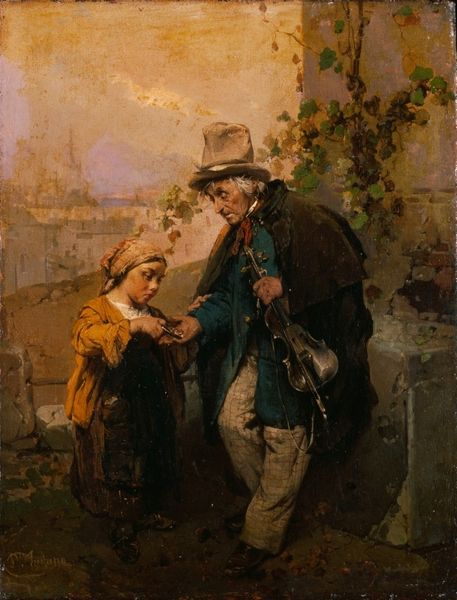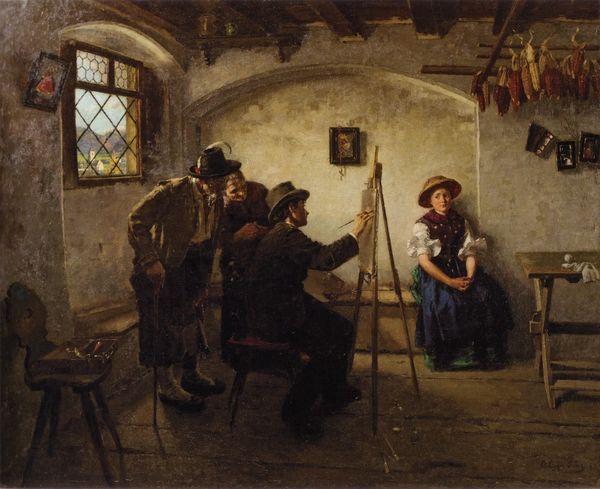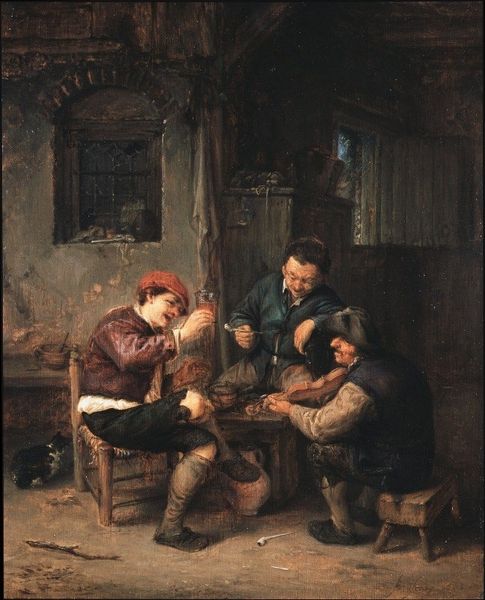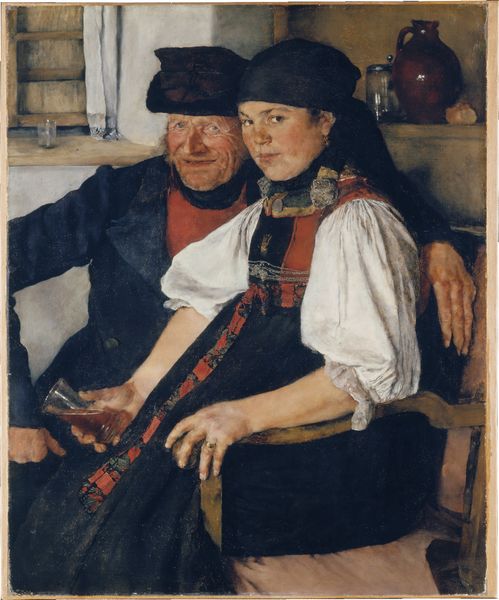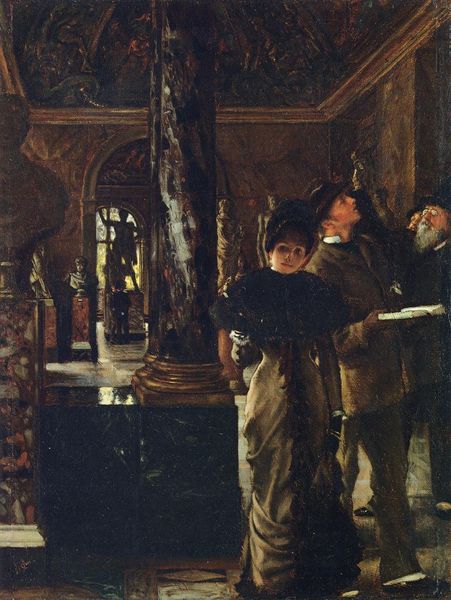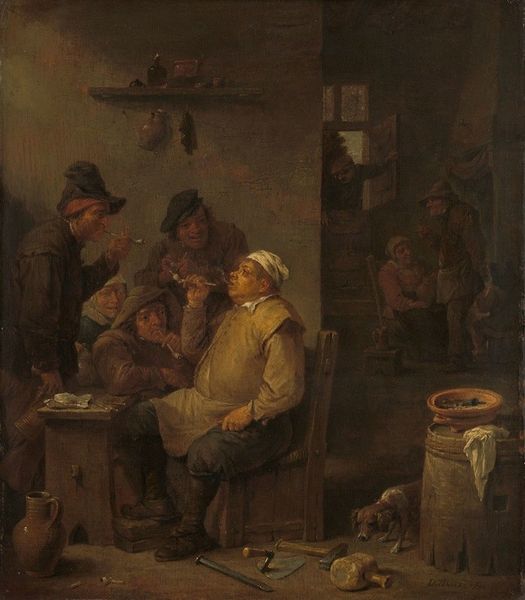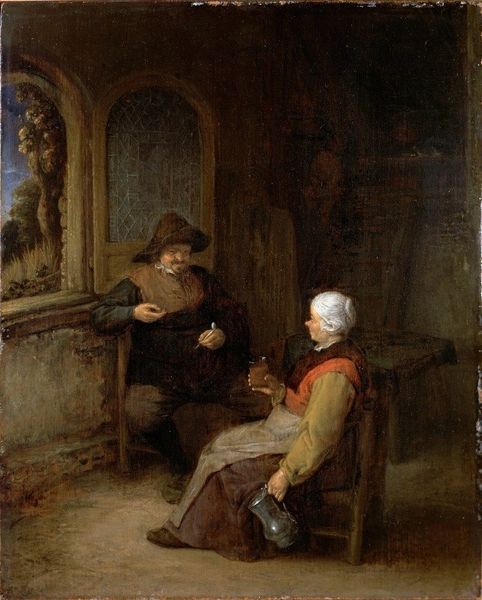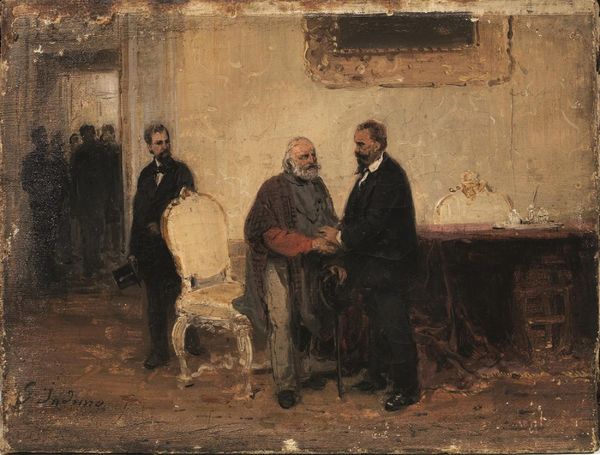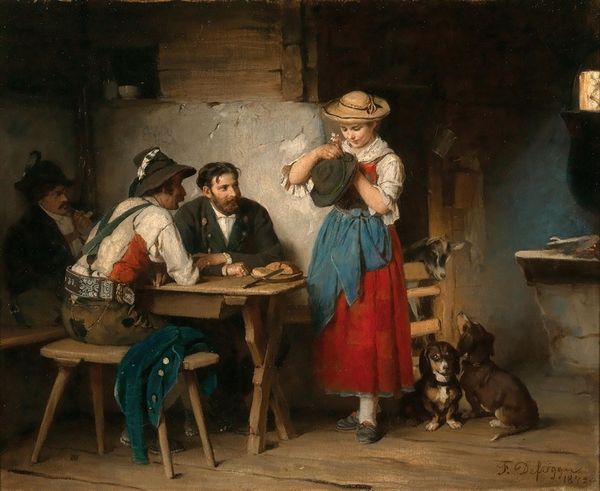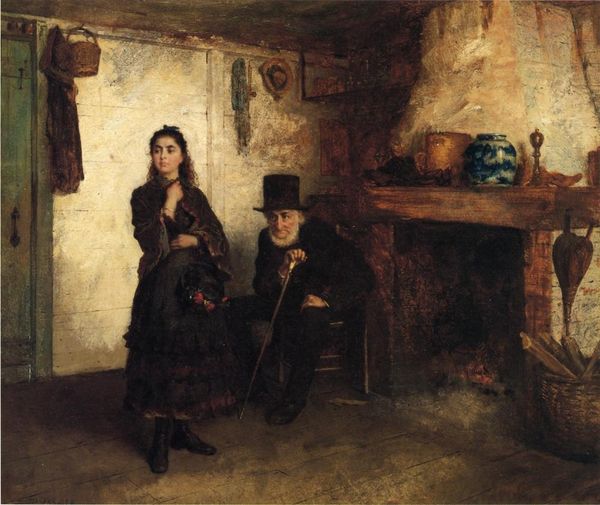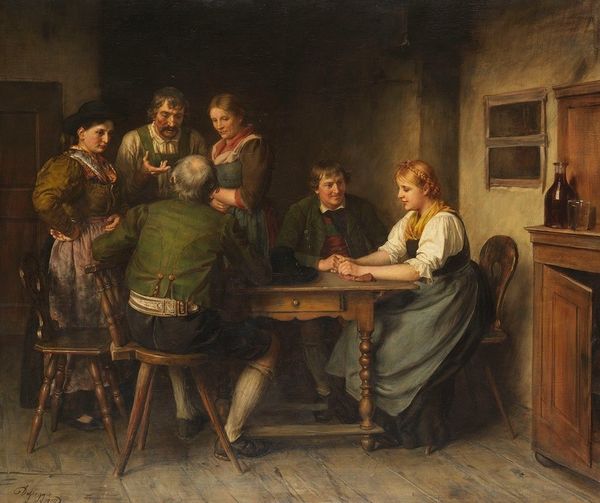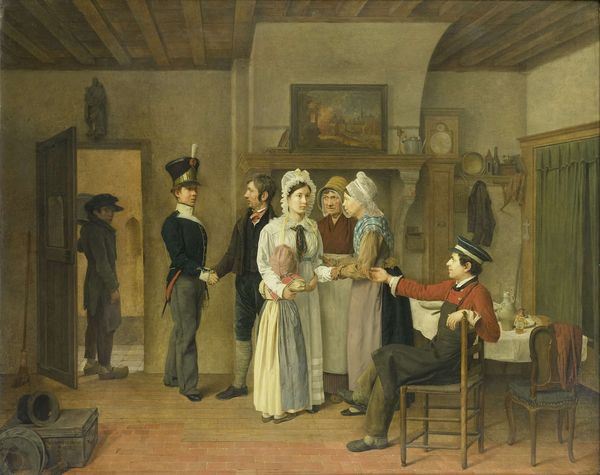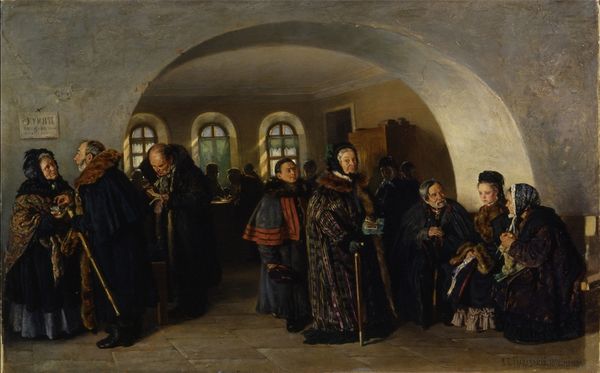
Dimensions: 49 x 39 cm
Copyright: Public domain
Curator: Stepping closer, what strikes you about the painting, "I Don't Remember," created in 1913 by Vladimir Makovsky? It is painted in oil and reflects a strong sense of realism and impressionistic techniques. Editor: Immediately, it's the contrasting emotions, the woman seems quite animated while the man next to her appears subdued, even weary. The somber colours amplify this mood. There's something poignant here. Curator: Yes, Makovsky was known for his genre paintings which often captured scenes of everyday life and social dynamics. Look closely at their clothing: what does it tell you about their social standing and perhaps their relationship? Editor: He's quite well-dressed, almost like an elite bourgeois and she has on what appears to be a poor older woman's babushka, the textures seem rough, even unkempt. Are we observing a power imbalance perhaps? A negotiation of sorts in this public space? Curator: Precisely. The painting reflects a societal complexity common in early 20th century Russia, just before the massive social upheavals that would reshape the country. Think about the public role of taverns like this, or public houses—these became important and very visible melting pots. How might it reflect the era’s growing tension? Editor: Considering that perspective adds layers. It reframes this image as a microcosm of pre-revolutionary society. How fascinating to realize this piece isn't just about a fleeting moment, but about power, gender, and socioeconomic divisions solidified during the social context. Perhaps, with its impressionist style, this reflects something on how modern life dislocates the poor even further. Curator: Exactly, that impressionistic touch heightens the sense of realism that exposes the nuances of human interaction. In a city changing as rapidly as Moscow was then, it encapsulates those fleeting glimpses of ordinary folks, living together but also very separately. Editor: I will view genre art quite differently going forward; it feels much more dynamic with attention paid to not just what is, but what these social conditions make visible about injustice and resistance. Thank you. Curator: And I leave thinking that the political reverberations of everyday exchanges continue to be a crucial lens for understanding artistic production even now.
Comments
No comments
Be the first to comment and join the conversation on the ultimate creative platform.
